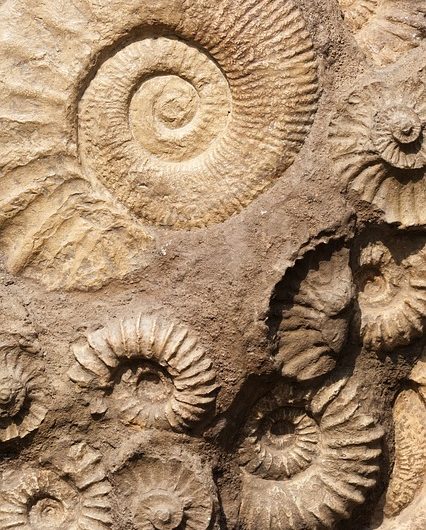Moroccan Fossils south of the Atlas Mountains are literally packed with paleontological and mineralogical specimens, and the entrepreneurial spirit of the locals has served scientists and collectors well. The local people quickly realized that the extraction, processing and sale of fossils would bring much more money than digging the barren ground, so the Bedouins of yesterday took up hammers and shovels and literally flooded the world market with high-class finds.
many amazing finds remain in the place of “capture” and are exhibited in numerous small museums. Almost the entire route from Erfoud to Rissani is lined with private museums. The owner of each museum will not only show you samples and will certainly try to sell you something, but also will take you around the known paleo-points for a certain amount of money. But one of these museums, a few kilometers from the town of Erfoud, is noticeably larger and more interesting than the others.
Unlike the European and Russian exhibitions we are used to, there is no strict line between a museum and a souvenir shop: one smoothly passes into the other, and on the shelves with finds for sale you can find no less interesting specimens than in the permanent exposition. And the latter, by the feeling, is hardly at all permanent and not for sale under any circumstances.
Most of the huge collection is compactly arranged in a single, not very large hall. Instead of glass showcases, there are long rows of shelves, where the exhibits are arranged by period. Of course, the Cambrian, Ordovician, Silurian, and Devonian occupy the lion’s share of the space with the ever-changing forms of trilobites.
Toward the end of the Paleozoic, the trilobites gradually departed, and with them, the sedimentary rocks on the territory of the country, which are interesting from the point of view of paleontology. The Mesozoic is much more modestly represented – mainly by plaster casts, mostly from American finds.
The curator turned out to be a friendly and unobtrusive young guy: he greeted us, briefly told us about the museum, and let us into the racks with openly standing finds, which no one controlled. To say that the light in the museum is poorly made is a lie: for the most part, there is simply no light. However, the unlimited freedom we were given, allowed us to turn on the Phoenix, a powerful pocket “spotlight” and easily direct the blinding beam to take pictures wherever we wanted.
The Moroccan Fossils at the Erfoud Museum are magnificent. Some specimens leave a feeling of complete unreality – for example, a perfectly dissected critter with a dense forest of long curved spines on its back, or an entire procession of trilobites lined up in a perfectly straight line and apparently instantly buried by a landslide during its migration to a better location.
The shelves with paleontological exhibits move smoothly into the mineral collection, which is extensive, but not as interesting, followed by the racks with specimens for sale. Here all order ends: unique specimens for several thousand dollars are shelved next to boxes full of mint specimens, and even tourist knick-knacks and simple articles made of fossils. And then you can go to the courtyard, littered with boulders, where preparators work. By the way, right on their workplace you can buy an interesting unpatterned specimen, tearing it out from under a chisel or dremel.
Although the presentation of the finds leaves much to be desired (for example, a huge slab of echinoderms, worthy of the world’s best museums, stands on crumpled newspapers right on the tiled floor), the museum is extremely interesting and impressive with its unique collections, and the absence of a glass barrier between the finds and the viewer allows one to get a much closer look at the world of Moroccan Fossils.

Comments